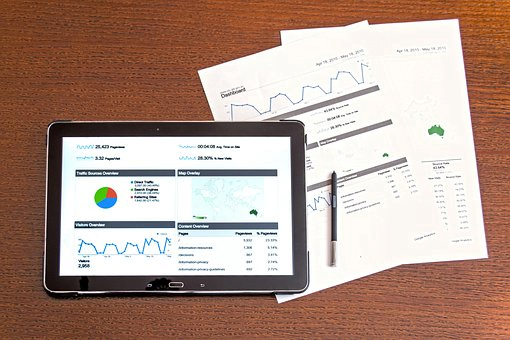Table of Contents
ToggleSecuring data and personal information from hackers has become quite challenging these days. So, protecting one’s digital identity has become more important than ever. Authentication is the front line of defense, allowing access to critical data to those approved by an organization or online platform. Various companies recognize the importance of securing data and use MFA or Multi-Factor Authentication as a protective layer over RADIUS authentication.
The main foundation of security involves controlling access. One can do so by authenticating or confirming the person’s identity who’s seeking access and authorizing them to enter with a particular ID and password.
In this case, Digital Identity Management is essential. If an organization isn’t authenticating its digital identity, it might run the risk of breach. So, have a solid strategy to avoid malicious access to devices, data, transactions, and applications via an excellent DIM service. Here is how:
1. Better Control Over Users Who Have Access to Your System
Apart from using only passwords that run the risk of getting spread or duplicated, authentication enables any organization to define who doesn’t or has access to confidential or crucial data. A 2021 report stated that approximately 51% of respondents are not assessing third parties’ privacy practices and security before giving them access to confidential information or sensitive data. By utilizing more authentication factors, you can limit your access while ensuring that whoever has access to the system is listed as an authorized person.
Another solution is to use services provided by reliable brands like authenticate. They use several features for authentication, such as face recognition, verifying backgrounds, detecting liveness, and using different knowledge quizzes. Besides stopping all kinds of frauds, they continuously monitor all the data to locate any warrant, imprisonment, or threats.
2. Authentication Increases Security with Third Parties
As a large organization, third parties will access your systems for various business purposes. Thousands of visitors could access your system based on the purpose or size. So, keeping track of this number could be challenging. Therefore, adding authentication forms like mobile, physical, or biometric could create a layered defense.
3. Reduces Risk from Compromised Passwords
Since the most common authentication technique includes having passwords, it is deemed the least secure method. Passwords will likely get stolen, reused, shared, etc., exposing the account holder and system administrator’s information. One data breach investigation report stated that approximately 61% of breaches were executed utilizing authorization credentials. Therefore, having a secure authentication factor could help to overcome these issues effectively.
4. Provides More Layers of Security Than 2FA
Certain authentication factors, like Multi-Factor Authentication, offer a stronger security layer than the 2FA factors. Organizations must make it compulsory for their customers and employees to authenticate their credibility via a time-based OTP (one-time password), google authenticator, and a password, which will help you verify the end-user securely.
This security measure ensures that the customers trying to access are who they claim to be. If the hackers try to access the system using one credential, they will be intimated to verify their identity via other methods. Thus, organizations storing customers’ confidential credentials must choose more than two ways of authentication to build and maintain customer trust.
5. Authentication Assures Consumer Identity
Authentication tools are essential for securing the user’s data from identity theft. When you implement this measure, the existing security of the traditional password and username login gets an extra protection layer. Cybercriminals usually find it challenging to crack the TOTP. The user gets it via email ID, SMS, or an automated phone call. Consumers need two information pieces for accessing their resources where authentication factors add a hint of awareness to authentication.
6. It Is Scalable for Changing the User Base
Authentication systems’ major role is that they adapt to business requirements easily. One can set it up for all users, like customers, partners, employees, etc. Multi-Factor Authentication combined with single sign-on helps to eliminate the necessity for too many passwords, improve user experience and streamline the login procedure. Overall, it also helps minimize the need to call the IT department for password assistance.
7. Adaptable for Different Use Cases
In certain circumstances, increased security measures are necessary, such as when carrying out transactions involving large sums of money or accessing confidential information from unfamiliar networks or devices. Adaptive authentication factors consider contextual and behavioral information, such as IP address, geolocation, and time since the last authentication, to evaluate potential risks.
If the IP address is deemed questionable, such as if it originates from a coffee shop or an anonymous network, or if other warning signs are detected, additional authentication factors can be required to obtain greater confidence in the user’s identity.
8. Reduce Operating Costs
Informing customers about suspicious activities on their accounts can be expensive and time-consuming for businesses. MFA effectively reduces fraudulent activities, minimizes the need for help desk interventions, and allows staff to concentrate on addressing intricate customer service matters. Although initial expenses might be associated with implementing MFA correctly, the long-term benefits of this investment are significant and financially worthwhile.
Summary
Identity-focused businesses face various risks, such as weak passwords and password reuse by employees, which can make them vulnerable to breaches. Proper authentication strategies can assist such organizations in addressing these concerns. It streamlines the account management process for employees, enabling them to manage their multiple accounts more securely and efficiently. It also provides greater visibility and control to administrators over identity management. Additionally, MFA aids organizations in achieving compliance with data regulations.



